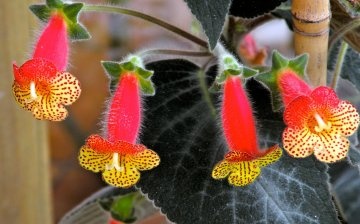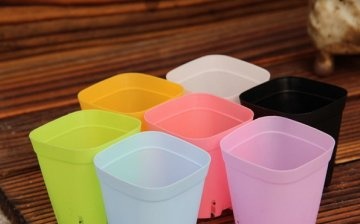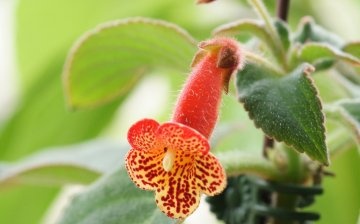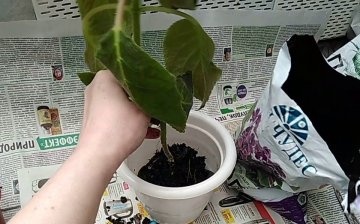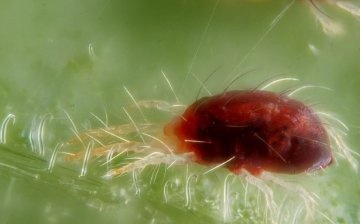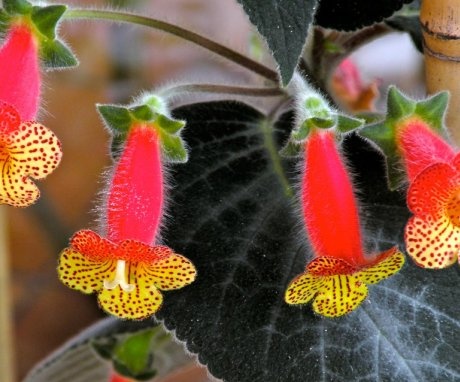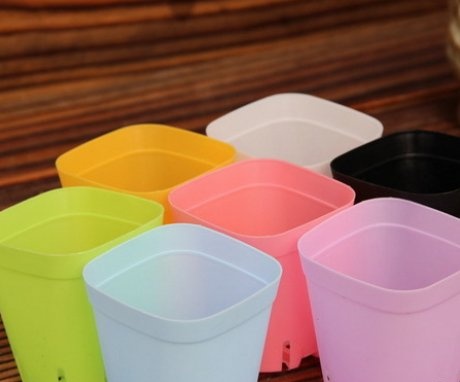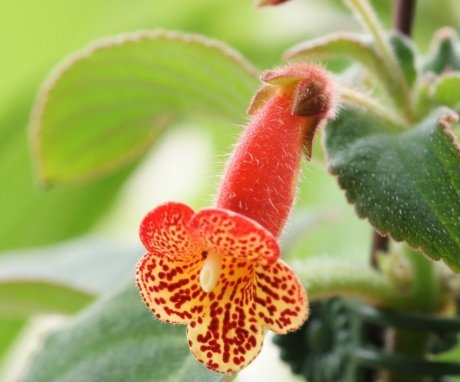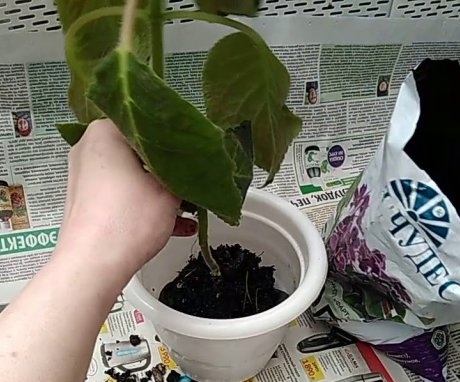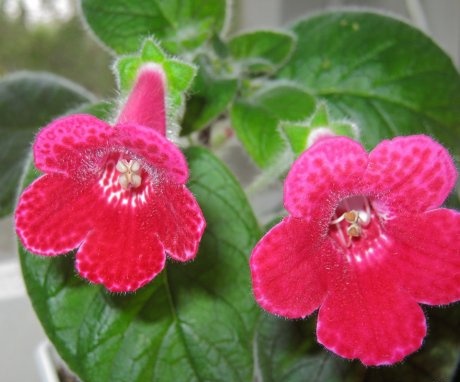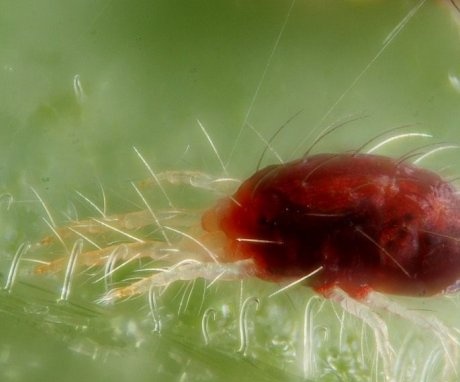Coleria: proper flower care at home
In nature, there are a huge variety of plants that are distinguished by the ability to produce beautiful bright inflorescences. One of these shrubs is Koleria. It is distinguished by its original color and unpretentious care. But gardeners, unfortunately, do not have much love for her, and this flower remains undeservedly in the shade.
Only a few flower growers are able to appreciate all the power and beauty of bright buds that outwardly resemble bells during their mass flowering. Interested indoor growers are encouraged to familiarize themselves not only with the structural features, but also with the care of the plant.
Content:
- Features of the structure of the flower
- Selection of soil and capacity
- Watering and feeding rules
- Everything you need to know about a transplant
- Lighting, humidity and temperature
- Diseases and pests, the fight against them
- The consequences of improper care
Features of the structure of the flower
Coleria belongs to the Gesneriev variety. It is considered a perennial herbaceous shrub that develops for a long time, but blooms in the same period.
The homeland of the bush is the mountains of South and Central America. Also, the plant can be found in the humid tropical forests of the continent, where monsoon rains and a changeable climate with high humidity are frequent. The flower got its name thanks to the researcher Kohler M, who not only discovered an interesting plant, but also described all its features and rules for caring for it in the 19th century.
Characteristic features of the plant:
- Coleria is an ampelous shrub that has the ability to live for a long time. This is possible thanks to a fairly well-developed root system plants.
- The foliage of the bush is located oppositely on the stem. The leaf plates are ovoid and oblong in structure. On both sides, the greenery has a slight soft pubescence, bright streaks and a ribbed surface. On the edges of the leaves are endowed with small notches.
- Depending on the species, they are endowed with a variety of colors - purple, green, purple or gray. The length of the plate can vary in length from 10 to 14-15 cm each.
- Abundant flowering - inflorescences are collected in bunches on one stem, can be from 2-3 to 5 flowers. Each flower has an elongated stem and looks like a bell. The opened buds of some varieties outwardly resemble a thimble.
- The lower petals of the flower, which are outside, are covered with specific oblong strokes or large dots, endowed with a bright, shaded color. The color of the buds may vary depending on the variety.
- The tone of the flower can be: pink, bright scarlet, orange, dark pink, with dots present, brown with a reddish sheen, on which white blotches appear.
In living nature, there are about 60 different subspecies of plants, which are represented by all these flowers. In most cases, gardeners choose a bright scarlet hue for their own cultivation.But although the plant is not so common among lovers of indoor flowers, caring for a shrub is not difficult and even a beginner in this business can handle it.
Selection of soil and capacity
As an exotic flower is acquired, it is recommended to transplant the plant in order to place the rhizomes in a nutritious soil and establish the normal habitation of the shrub. Initially, it is worth choosing a suitable pot.
To transfer to a new container, you should choose a wide and shallow container. You should not immediately root the inflorescence in a voluminous pot, designed for several years in advance. Such a planting will slow down the growth of the ground part, because the shrub will direct all its forces to build up the root system and completely entwine the soil with rhizomes. Only then will the plant begin to release flowers. Therefore, when choosing the optimal size of the flowerpot, this fact should be taken into account. It is worth picking up a flowerpot only 2-3 cm wider than the previous container.
It is required to control that there are drainage holes in the tank on the bottom.
This is required so that the water does not stagnate in the rhizomes, but goes out into the sump, where it can be removed. After selecting the optimal flowerpot, you should take care of a suitable soil. In the wild, the plant develops in any soil, for it there is no difference between fertile land or depleted land. Naturally, in the soil enriched with minerals and vitamins, the plant will develop more elegantly and delight with bright inflorescences.
For planting in the ground, it is recommended to choose a soil substrate with the following characteristics:
- Loose.
- Good moisture and oxygen permeability.
- Easy.
It is recommended to independently prepare a soil substrate that will correspond to a certain composition:
- Equal parts of river sand and dry, crushed peat.
- Sod soil - in the amount of 2 parts.
- Charcoal or ash and humus.
All components are thoroughly mixed and left for a period of 15-30 days. This is required for nutrients to saturate the soil. If you cannot prepare the soil substrate yourself, you can use purchased land. Ideal for planting soil suitable for Saintpaulia or Gloxinia. It already contains all the necessary elements for the normal growth and development of culture.
Watering and feeding rules
Coleria is distinguished by a specific structure of rhizomes - they have scales. The roots themselves are small, highly branched and have a slight thickening. Due to this structure, the plant reacts very strongly to a lack of nutrient moisture. When oversaturated, the flower also reacts unfavorably. Its rhizomes begin to rot or a fungal infection settles in them, which leads to the death of the entire bush.
Watering rules:
- In order for Coleria to grow and develop favorably, it needs moderate watering - no more than 1 time in 7 days.
- Ideal for adding moisture will be melted water, warm boiled or rained at room temperature. If tap water has a high chlorine content during analysis, then such a liquid is not suitable for watering a plant.
- In wildlife, the shrub loves high humidity and a changeable climate. Therefore, in the summer heat, the flower should be periodically additionally moistened. But a pubescent plant reacts poorly to spraying from a spray bottle.
- Moisture accumulates on the villi and dries out before reaching the leaf plates. Therefore, for external humidification, it is worth installing Kolleria in a sump with water on a hill or on moistened expanded clay or sea pebbles.
For abundant flowering and lush growth of leaf plates, Koleria needs periodic feeding with nutrients and fertilizers. It is especially important to add vitamins and minerals during the flowering period - from the beginning of April to the last days of August.
For fertilizers, a special top dressing sold in flower shops is suitable for Saintpaulias and orchids.
It needs to be diluted 1: 2 so as not to provoke an oversaturation of minerals and vitamins or lead the plant to a chemical burn. It is best to choose complex fertilizers, in which nitrogen and potassium will be contained in equal proportions (20 grams each), and phosphorus is slightly increased (50 grams). The procedure is carried out once every 28 days. During the period when the bush is at rest (second half of winter), fertilizers are completely stopped.
Everything you need to know about a transplant
A young plant should be transplanted no more than once a year. This is due to the fact that the shrub develops rapidly and during this period manages to grow a significant root system.
The event is held in most cases in early March. This should be done as soon as the plant is out of hibernation and is gaining strength to start active vegetation and flowering. During the period of active growth and flowering, it is strictly forbidden to carry out transplant work. Otherwise, there is a possibility of diseases and other problems with the shrub.
For the transplant, the optimal period is selected when Koleria managed to wake up, but has not yet begun to lay flower buds.
The procedure is carried out by the transshipment method:
- To do this, the soil should be well moistened the day before planting. The next day, the soil, together with the shrubs, will come out perfectly from their homes, without damaging the root system.
- It is strictly forbidden to shake off the soil from the rhizomes. It is only necessary to externally inspect the rhizomes for the presence of affected areas, rot or creases. If the latter is detected, it is necessary to carefully remove all damaged parts and sprinkle the sections with crushed activated carbon or wood ash.
- Drainage is poured on the bottom of the prepared pot, it is required so that excess moisture does not stagnate, but gradually leaves the flowerpot on its own, without provoking rotting or the development of the disease.
- After that, a layer of fresh soil is poured. In the middle, a lump of earth with shrubs is established. A soil substrate saturated with nutrients is poured from the sides and top.
- The top layer needs to be tamped a little, and shed on top. Additionally, charcoal should be added to the pot, it helps to prevent the development of root rot on the rhizomes of Coleria.
Lighting, humidity and temperature
Coleria is not a capricious flower in relation to location or specific humidity. To recreate favorable conditions of increased humidity, air irrigation should be adhered to. For this, the plant is placed in a tray with water, from which it is saturated with the necessary nutrient moisture.
Lighting also does not play a specific role, but you should not install the plant in direct sunlight. The latter in the midday heat can provoke the development of burns on delicate leaf plates. But still, the plant is light-loving, so you should not shade it and hide it in distant darkened corners. In such conditions, the shrub will become faded and stop producing bright bells-inflorescences. An ideal growing condition will be a western or eastern window sill.
When placed on the north side, signs of malaise or whitening of the leaf plates may appear.
The only thing is that the plant has a negative attitude towards cold winds and drafts. Do not leave shrubs indoors during the winter, when airing the room. Otherwise, the plant will get sick and risk dying completely. Periodically, you should give the shrub a breath of fresh air, but not placing the flowerpot in an open stream.
Coleria is a thermophilic flower, therefore it loves elevated degrees in the room where it is grown. In summer, the optimal temperature regime, at which the bush will actively release new buds, becomes +23 .. + 29 C. During the winter dormancy period, you should not reduce the degrees below +15 .. + 19 C.It is also not recommended to remove the plant in a dark place, it should always receive the required dose of ultraviolet radiation.
Diseases and pests, the fight against them
Pests and diseases appear on the plant due to non-compliance with the rules of simple care. The plant is affected by the invasion of spider mites or aphids. Parasitic insects feed on plant sap, lead to wilting of leaf plates, and subsequently stems, and a complete cessation of plant growth and development.
If the parasites are found on the foliage of the bush, they are placed on the lower cavity of the leaf plate, and about the presence spider mite says the appearance of a cobweb and an accumulation of white tangles at the joints of the leaves with the trunk, it is necessary to apply chemical insecticides... If pests are found in small numbers, it is worth removing them mechanically and treating the plant using folk methods (soap-ash or tobacco solution).
In addition to parasitic individuals, Coleria tends to acquire diseases such as powdery mildew and root rot.
If spots are found on the leaf plates that differ in a white or grayish tone, then the affected leaf plates are recommended to be completely removed and, if possible, burned. When the bush begins to wither for no reason, then the problem should be looked for inside. It is recommended to let the soil substrate dry and pull out the lump of soil, while carefully examining the state of the root system. When rot appears, the affected areas are removed. If possible, it is worth crumbling the soil from the root system, and disinfecting the rhizomes in a weak solution of potassium permanganate. After that, plant the plant in fresh soil and a new flowerpot.
It is best, if any signs of malaise appear, immediately begin a therapeutic effect with folk remedies or chemical fungicides... You should not start the plant and provoke its complete decay. Constant monitoring and careful maintenance will result in a vibrant, constantly flowering plant.
The consequences of improper care
When caring for a plant, it is recommended to consider the following nuances:
- Any mechanical impact on the sheet plates leads to their injury or breakage.
- If, during watering, water gets on the leaves, stains appear on them, which stimulate the plate to dry and fall off.
- Increased watering leads to the development of rot on the root system.
- If the plant stands under direct streams of light, its leaves begin to fade and become covered with large spots of yellow tint.
- If there is insufficient humidity in the room, the greens spin and die.
- If, when leaving for a winter stay, the shrub has not completely shed its leaves, it should not be removed to a dark corner. Leaflets in such a situation require natural light or exposure phytolamp.
- If there is no flowering, then there may be several reasons: insufficient intake of sunlight, dryness in the room, excessive introduction of nutrient moisture, lack of nutrients and vitamins in the soil, during the rest period the optimal air temperature is not maintained.
- If the plant is watered with cold water, then the appearance of dark or brown spots on the surface of the leaves is observed. It is necessary to carefully read the recommendations for watering the shrubs and irrigate only with settled water at room temperature or, in extreme cases, rainwater, but kept for a certain period of time.
- When a gray bloom occurs on the leaves, it may indicate the occurrence of oidium. To neutralize the disease, it is worth using a soap solution or exposure to chemical fungicides.
Thus, Coleria is an exotic flower that does not require specific living conditions, but for it you need to recreate comfort and periodic watering.Otherwise, there is a possibility of the appearance of parasitic insects and the development of diseases. If a negative condition is detected, treatment should be started immediately, without waiting for further developments.
More information can be found in the video:




